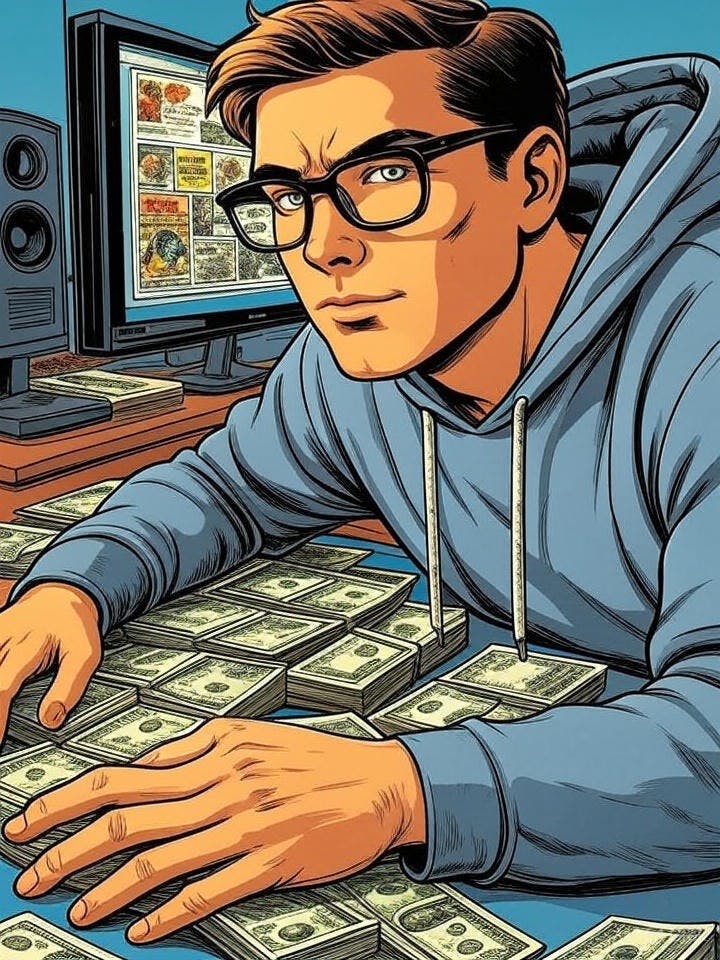The System-Architecture
We have too much money. A provocative statement, isn’t it? But money itself is nothing more than a digital record used to exchange goods and services. Banks serve as intermediaries, helping users manage the timing of transactions. For now, they remain the main data centers. The transaction balance is measured in units called currencies.
Of course, different systems operate such databases, often using different names for their currencies, though most are referred to simply as “money.” These systems are typically structured around geographic regions, much like local markets. Thankfully, they offer excellent APIs to maintain compatibility. Naturally, goods and services from some markets are in higher demand than others. As a result, users must exchange more of one currency for another on what is known as the foreign exchange market.
At first glance, this seems like a well-designed system that allows nearly everyone to access goods and services through the basic principle of supply and demand. So, where is the challenge?
The Overhead - Taxes
The exchange of goods and services is not entirely managed by the users who produce and consume them. In most cases, users elect a more privileged group to oversee parts of the system. Let us call this user-group “the government.” Its members are entitled to redistribute currency units and to determine how much is taken from users on a regular basis; this is known as tax. What do they spend it on? That largely depends on the promises they made to get elected.
Are they more competent than the users who actually created the goods and services? Do they always honor their commitments? Fortunately, elections are held at regular intervals.
The Ambitious Superusers
Now, imagine if these superusers could not only redistribute but also create money at the push of a button. This feature was introduced in the United States in 1971, when the total money supply was no longer backed by gold. The organizational unit with the privilege to exercise this feature is called the central bank.
Would this feature lead to a greater volume of goods and services? No. It would merely reduce the value of the currency being manipulated. The same goods and services would simply be traded for a higher number of currency units.
Luckily, the overall volume of goods and services, let us call it the economy, tends to grow over time. If the economy expands, the price of a good such as a loaf of bread would fall, assuming the supply grows faster than demand. But if the supply of money increases instead, prices rise. Managing this balance is a delicate task.
Out of Balance
Most governments tend to create more money than economic growth would justify if prices are to remain stable. This leads to inflation. But why would they do that?
Governments often spend beyond their means, leading to debt. That debt must be serviced, which requires paying interest. Unfortunately, this is often based on the flawed belief that debt creation equals wealth creation. In 1975, shortly after the aforementioned “feature” was introduced, the US money supply (M2) equaled 37 percent of GDP.
By 2025, it had risen to 75 percent of GDP, according to Federal Reserve data (H.6 release, via FRED “M2SL”).
A Dangerous Way Out - The YOLO Approach
So, we have too much money in the system. Some countries that experienced hyperinflation have responded by simply removing zeros from their currency (let’s float the point), as Zimbabwe did in the 2000s. Others, like Argentina, have dramatically reduced the government's role in the economy and allowed markets to self-correct.
Feel free to investigate which strategy was more effective.
But there may be a third approach:
Imagine the creation of an artificial currency whose supply is intentionally limited. Its demand is generated through marketing and social media, even if it cannot be widely used to purchase goods and services. Who in their right mind would exchange their existing currency for something so abstract? Well, even money has a price.
That price is determined by supply and demand. Though it sounds odd, the price of money is a real concept. If a currency cannot buy much but can still be exchanged for others, its value becomes detached from goods and services and instead driven by hype. Combine this with the idea of artificial scarcity and the result is predictable. Its value rises in relation to existing currencies.
Eventually, more and more “old” currency, let us call it fiat money, is exchanged for this new and shiny alternative. It may even become so valuable that banks and governments can no longer ignore it, which, in turn, increases its value further. At some point, it might even replace conventional currencies.
Here is the catch:
Its supply cannot be increased at will by central banks, which means it cannot be used as a political tool. Would governments willingly give up such power? Probably not. Financial markets are highly regulated environments. That means the new shiny currency can be banned. If that happens, its value could collapse to near zero overnight, along with all the fiat money invested in it.
That is one way to eliminate excess M2 money from the system.
Of course, this scenario is purely fictional.


